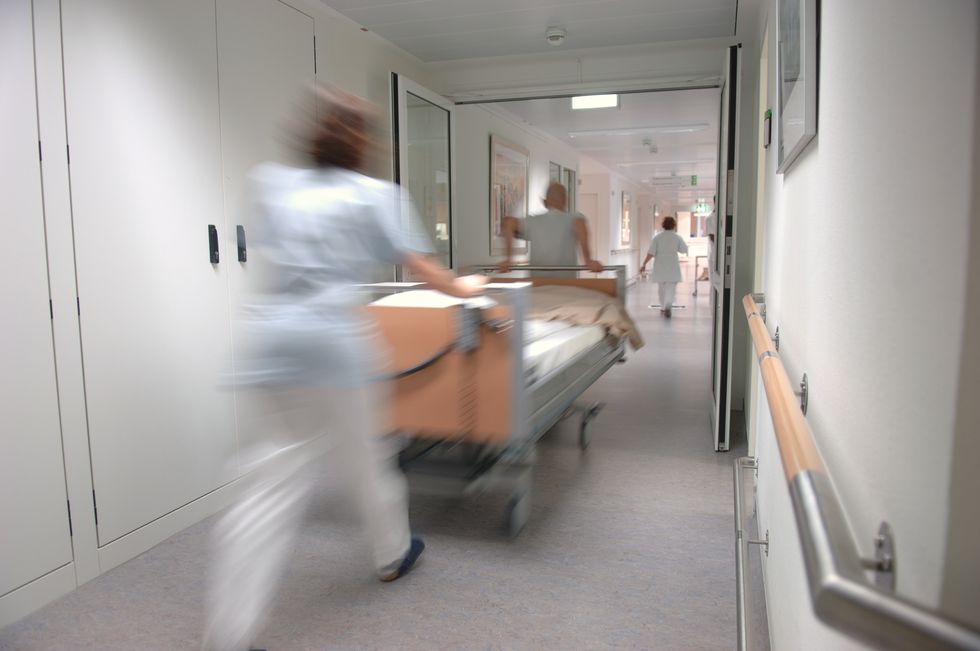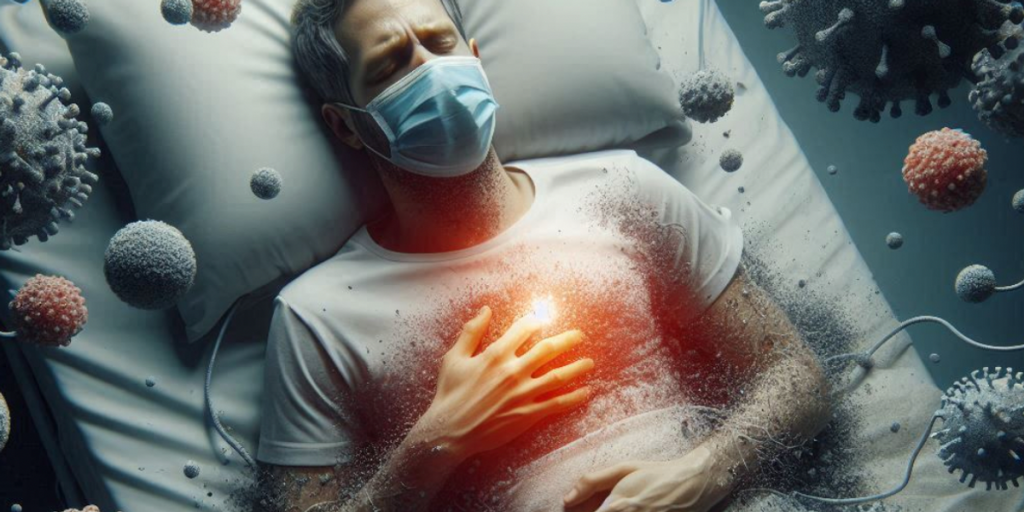COVID-19 affects people very differently, causing mild symptoms in some and devastating complications in others.
Many who fall into the second category are now facing a second battle: lung damage.
Brazilian researchers observed long-term lung dysfunction in patients who had required intubation and had been discharged from the hospital two years earlier.
The São Paulo researchers also documented that some patients who appeared to have fully recovered at the time of discharge from the hospital experienced recurrence of lung disease after 24 months.
The study included 237 patients admitted to the Hospital das Clínicas, a hospital complex run by the Faculty of Medicine of the University of São Paulo (FM-USP), between March and August 2020 and followed up for six to 12 months after discharge. The group of patients with pulmonary involvement was evaluated after 18 to 24 months.
Brazilian researchers observed long-term abnormalities in patients’ lungs.
Getty Images
The majority (92%) had changes in their lungs between the two follow-up visits: 58% had inflammation, and 33% had fibrosis (scarred tissue that hardens and prevents proper gas exchange). A minority (2%) of those with fibrosis-like lesions had improved lung condition at the second evaluation, but many more (25%) had worsening lung conditions.
This study project It is supported by FAPESP and the Instituto Todos pela Saúde, an initiative led by Itaú Unibanco, Brazil’s largest private bank.
The researchers aim to monitor more than 700 patients for at least four years after they were hospitalized for treatment of COVID-19 and explore the impact of COVID-19 on many areas, from genetics to physical, psychological and cognitive function, making it one of the largest cohort studies of its kind worldwide.
“Regarding lung problems, elderly patients who required intensive care and mechanical ventilation showed signs of pulmonary complications even two years after being discharged from hospital. Further follow-up is needed to know if it is permanent. Another interesting finding that shows that the virus has surprised us all is that the lungs of 20 patients improved after one year but worsened after two years,” said Carlos Roberto Ribeiro de Carvalho, professor at FM-USP and corresponding author of an accompanying editorial. Published in The Lancet Community Health – Americas.
Fibrosis is a serious concern, so in the three-year post-COVID evaluation (already completed but still being analyzed), the researchers also included bronchoscopic lung biopsies to gather more detailed information about the changes in lung volumes observed on previous CT (computed tomography) scans.
“We need to determine whether what we’re seeing is scar tissue or early fibrosis. Biopsies are important because they allow us to decide whether to intervene with medications. [corticosteroids or antifibrotics] It tries to stop the progression of fibrosis,” Carvalho explained.
Lung scarring and fibrosis can be caused by more than 200 factors, he added, including inhalation of coal, silica and asbestos dust by miners, factory workers and construction workers. Inflammatory autoimmune diseases such as scleroderma, lupus and rheumatoid arthritis can also cause scarring of lung tissue and reduced breathing ability.
“This has been observed in other viral pneumonias but seems to be more frequent with SARS-CoV-2. It is a problem that requires monitoring because there are only two treatments for advanced fibrosis, both of which involve expensive and costly drugs or lung transplants. This is therefore a very serious complication for patients and a major burden on the healthcare system, especially the SUS. [Sistema Único de Saúde , Brazil’s public health network]” Carvalho said.

Fibrosis is a serious concern, researchers say
Getty Images
The study also identified another post-COVID-19 pulmonary complication: patients who did not require intensive care but who received supplemental oxygen developed bronchiolitis and other small airway diseases.
“Unlike patients who were intubated and later found to have fibrosis, patients who only received supplemental oxygen during their hospital stay developed a type of bronchial disease that we are now studying,” Carvalho said.
The findings could help clinicians develop new protocols for treating patients with post-COVID-19 lung disease sequelae and long COVID-19, he added, noting that the main symptoms are fatigue and weakness.
“We realized that these two symptoms could be related to three different factors. The fatigue and weakness could be due to lung disease, or it could be due to heart disease. The third possibility is a muscle problem, such as sarcopenia. [loss of muscle mass, force and function],” He said.
“All this has to be taken into account. The treatment is different in each case. Above all, it is important to know that a treatment exists. Our research project aims to increase knowledge about the aftereffects of COVID-19 and how to treat it. This is our goal.”


